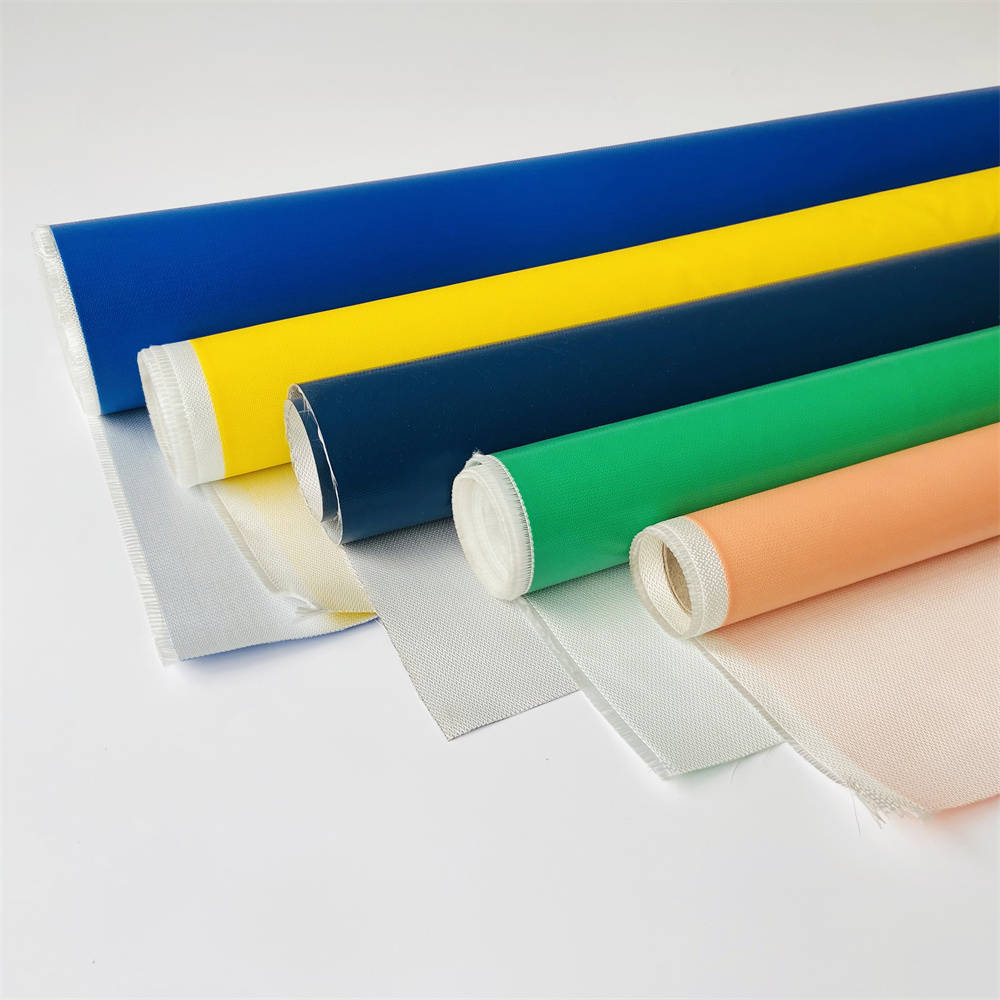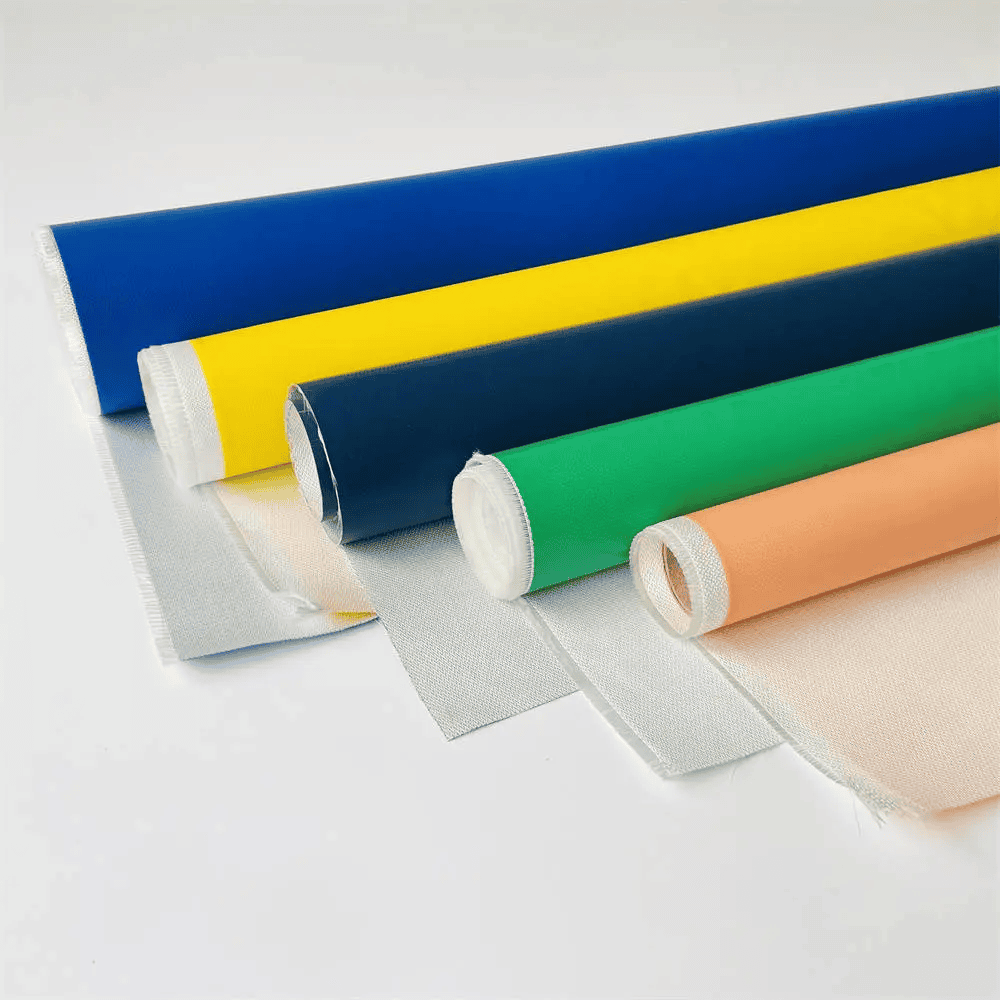Silicone-Coated Fabric: The Fire-Resistant, High-Temperature, and Multi-Purpose Industrial "Guardian"

Official Website: https://advancetex.co/
Learn more about Silicone Coated Fabric: https://advancetex.co/category44/
Learn more about PTFE Coated Fabric: https://advancetex.co/category175/
More product videos: https://www.youtube.com/@AdvanceTex0203/videos
Find out more:Silicone Coated Fabric
Abstract
With the continuous advancement of industrial automation and construction technologies, fire-resistant and thermal insulation materials play an increasingly important role in ensuring safety, extending equipment lifespan, and improving energy efficiency. Silicone-coated fabric, a new composite material made by combining high-temperature-resistant fiberglass fabric with silicone rubber, has emerged as a key protective material in various industrial and civil applications due to its excellent heat resistance, fire resistance, mechanical stability, and chemical durability. This article provides a comprehensive analysis of silicone-coated fabric, covering its principles, manufacturing processes, properties, testing methods, and application prospects, as well as guidance on how to identify and select high-quality products.
1. Overview of Silicone-Coated Fabric
1.1 Definition and Composition
Silicone-coated fabric typically refers to a composite material in which high-temperature-resistant and mechanically strong fiberglass fabric is coated, impregnated, or calendered with silicone rubber, followed by high-temperature vulcanization to form a stable structure. This design combines the advantages of both the base fabric and the coating:
-
Fiberglass fabric provides high strength, heat resistance, non-flammability, and excellent insulation properties.
-
Silicone rubber adds flexibility, weather resistance, corrosion resistance, waterproofing, and oil resistance.
This organic-inorganic composite material achieves stability in high-temperature environments while maintaining adaptability in variable working conditions, making it widely applicable in thermal insulation, fire protection, mechanical sealing, and specialized engineering fields.
1.2 Development Background
In recent years, global trends toward energy conservation, industrial safety, and environmental protection have increased demands for advanced insulation and fire-resistant materials. Traditional insulation and fireproofing solutions are gradually becoming inadequate for modern engineering needs. Due to its eco-friendly, low-smoke, and long-lasting characteristics, silicone-coated fabric has become a preferred alternative to traditional materials. Continuous advancements in formulations, processing techniques, and composite material technologies have further enhanced its performance and broadened its applications.
2. Manufacturing Process and Key Technologies
2.1 Selection of Raw Materials
-
Fiberglass fabric substrate: Alkali-free, high-temperature-resistant fiberglass fabric must be selected, as its weave density, surface smoothness, and tensile strength directly determine the overall performance of the composite material.
-
Silicone rubber coating: High-quality silicone rubber must possess properties such as heat resistance, weather resistance, aging resistance, and chemical stability. Additionally, eco-friendly formulations should be used to minimize the release of harmful gases during production.
2.2 Manufacturing Process
The production of silicone-coated fabric typically involves the following steps:
-
Substrate Pre-Treatment: The fiberglass fabric undergoes cleaning, drying, and surface treatment to remove impurities and enhance coating adhesion.
-
Silicone Rubber Coating: The fabric is impregnated, coated, or calendered with silicone rubber to ensure uniform distribution. Modern automated control systems maintain precise coating thickness, weight, and consistency.
-
High-Temperature Vulcanization: The coated fabric undergoes high-temperature, high-pressure vulcanization, facilitating full cross-linking between the silicone rubber and fiberglass fabric, forming a stable composite structure. Temperature, pressure, and curing time control are critical to ensuring the material’s heat resistance and aging resistance.
2.3 Technological Innovations
Recent advancements in composite technology, dual-sided coatings, and multilayer structures have further improved the overall performance of silicone-coated fabric. For example, nano-modification techniques enhance heat resistance and flexibility while reducing thermal conductivity, improving insulation efficiency.
3. Key Properties and Technical Specifications
3.1 Heat Resistance
Silicone-coated fabric demonstrates excellent stability in high-temperature environments:
-
Long-term heat resistance: Typically up to 250°C.
-
Short-term heat resistance: Some specialized products can withstand up to 280°C, with certain formulations supporting applications from -50°C to 550°C.
This property enables its long-term use in applications such as boiler insulation, pipeline thermal protection, and equipment heat shielding.
3.2 Fire Resistance
Thanks to the non-combustible nature of fiberglass fabric and the flame-retardant formulation of silicone rubber, silicone-coated fabric exhibits slow-burning characteristics and does not produce molten droplets when exposed to direct flames. It meets GB8624-2006 Class A2 fire protection standards. Fire testing confirms that in real fire scenarios, silicone-coated fabric effectively slows flame spread, providing valuable time for evacuation and fire control.
3.3 Mechanical and Chemical Stability
-
Mechanical Strength: High tensile strength and tear resistance ensure durability against mechanical vibrations, impacts, and thermal expansion.
-
Chemical Resistance: The silicone coating is inert to most acids, alkalis, oils, and other industrial chemicals, making it suitable for harsh environments.
-
Electrical Insulation: Excellent dielectric properties make it safe for high-voltage applications.
4. Quality Testing and Evaluation Methods
4.1 Coating Uniformity Testing
-
Visual Inspection: High-quality products should have a smooth surface with no visible air bubbles or pinholes.
-
Weight Measurement: Precision instruments are used to measure coating weight to ensure consistency with design specifications.
4.2 Adhesion Strength Testing
Through friction, tensile, and peel tests, the bonding strength between the silicone rubber and fiberglass fabric is evaluated. High-quality products maintain coating integrity under mechanical loads and repeated use.
4.3 Heat Resistance and Fire Testing
-
High-Temperature Aging Test: Evaluates long-term stability at elevated temperatures.
-
Flame Test: Conducted per GB8624-2006 and other national standards, using a flame torch to assess combustion characteristics, smoke density, and melting behavior.
5. Key Application Areas
5.1 Industrial Insulation and Heat Protection
Silicone-coated fabric is widely used in:
-
Pipeline Insulation: Ideal for long-distance pipelines in chemical, petroleum, and metallurgical industries.
-
Equipment Heat Shielding: Applied in fans, boilers, turbines, and other high-temperature equipment to prevent heat loss and improve energy efficiency.
5.2 Fire Protection Applications
-
Welding Protection: Used in fire blankets and curtains to shield workers and equipment from welding sparks and molten metal splashes.
-
Building Fire Safety: Used in fire barriers and smoke curtains to enhance fire protection in large public buildings.
6. Industry Standards and Certifications
To ensure high performance in various applications, silicone-coated fabric must comply with stringent national and industry standards, including:
-
GB8624-2006: Fire resistance classification.
-
ISO 9001: Quality management system certification.
-
RoHS, REACH: Environmental and chemical safety regulations ensuring eco-friendly production.
7. Future Trends and Innovations
7.1 Development of Advanced Composite Materials
Future advancements will focus on higher temperature resistance, lower thermal conductivity, and longer service life. Innovations such as nano-modification, dual-sided coatings, and multilayer composites will further enhance performance in extreme conditions.
7.2 Smart Monitoring and Self-Diagnosis Technologies
With the rise of Industry 4.0, fire-resistant and thermal insulation materials integrated with sensors and real-time monitoring systems will provide preventive maintenance and improve safety.
7.3 Sustainability and Environmental Protection
Future manufacturing processes will prioritize environmental sustainability, using solvent-free formulations and recyclable materials to reduce ecological impact.
Silicone-coated fabric, with its outstanding heat resistance, fire protection, and versatility, has become an essential "guardian" in modern industrial and construction safety systems. From precision manufacturing to rigorous quality testing, and from diverse applications to continuous technological innovations, this material exemplifies the significant contributions of material science to safety, energy efficiency, and environmental protection.

